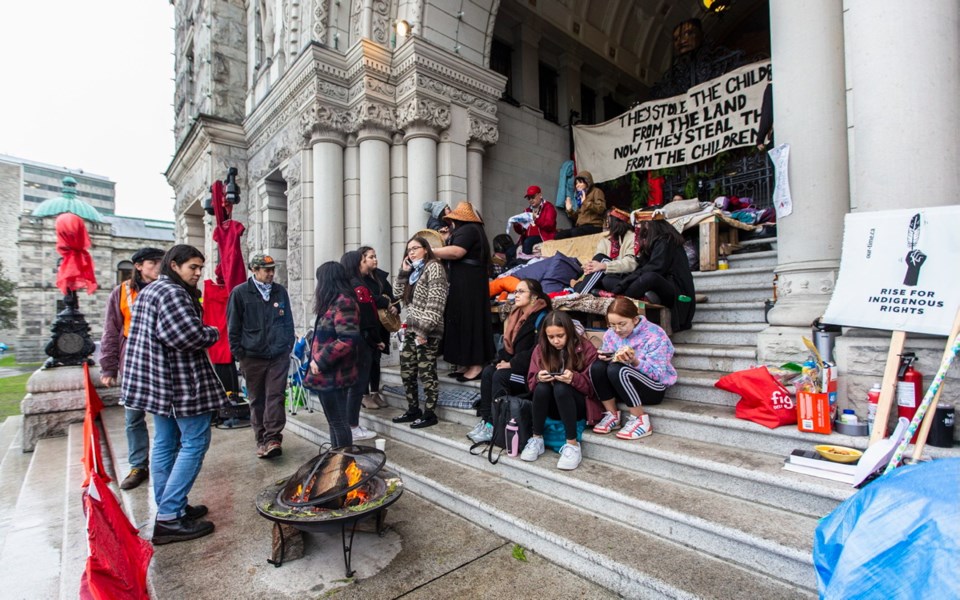Young Indigenous people camped outside the legislature said Monday they will wait to see how the Wet’suwet’en respond to a tentative agreement in a dispute that has sparked protests nationwide before making any moves.
“We know that agreements from the government just traditionally haven’t been upheld. If this agreement goes through, it needs to be done in the proper way,” said Shay Lynn Sampson, who is Wet’suwet’en and Gitxsan.
A week into their legislature occupation, the group received a visitor Monday who is known for her work in advocating for First Nations child welfare.
Cindy Blackstock posted a photo of herself with the group on Twitter and the caption: “Proud and honoured to be meeting with the [Indigenous Youth for Wet’suwet’en] at the B.C. legislature this morning. Come over and meet these young leaders, join the conversation and take action to end injustices.”
A member of the Gitxsan First Nation, Blackstock was in town from Ottawa to help facilitate a city-hosted reconciliation event.
Details of the proposed agreement between Wet’suwet’en hereditary chiefs and senior government ministers will not be publicly released until members of the Wet’suwet’en clans can review it.
The tentative agreement addresses how to recognize Wet’suwet’en rights and title throughout their territory, but it does not resolve differences regarding the construction of a 670-kilometre natural gas pipeline by Coastal GasLink. The pipeline will transport natural gas from Dawson Creek to a $40-billion export facility under construction in Kitimat.
“All parties at the table recognize that the differences relating to the CGL project remain,” government ministers said in a joint statement Sunday. Coastal GasLink resumed work in the Morice River area on Monday.
Sampson called it “disappointing” that the tentative agreement will allow the natural gas pipeline project to continue.
“We’ll see what the proposed agreement is and if that goes through,” she said.
Following Sunday’s announcement, life at the legislature camp carried on as it has for the past week.
About 100 people enjoyed brunch in the sunshine while musicians strummed by the fountain.
Others sat in camping chairs around a fire, while a core group remained at the top of the legislature steps in front of the building’s ceremonial entrance.
Communal meals and a whiteboard listing daily activities evoke a summer-camp feel.
On the docket Monday was a breakfast buffet, followed by a sandwich buffet and warming up by the fire, then an afternoon group stretch and dinner and a movie.
The group has set up a projector in the evenings to screen films about Indigenous resistance. Last week, they watched Kanehsatake: 270 Years of Resistance, which chronicles the 1990 Oka crisis over construction of a proposed golf course on Mohawk territory in Oka, Que.
Sampson, who grew up on Hagwilget reserve near Hazelton, caught an afternoon flight to Gitxsan territory on Sunday.
She’s one of four members of the legislature group who spoke at a community meeting Monday with Gitxsan hereditary chiefs who were arrested last week after blockading a rail line.
“We’re going to go speak with them and see how our community is feeling,” she said Sunday.
The Gitxsan and Wet’suwet’en are neighbours.
The two nations won a landmark Supreme Court case together that recognized the hereditary chiefs’ authority and the exclusive right of the Wet’suwet’en and Gitxsan peoples to the land, but did not specify the boundaries.
regan[email protected]
— With files from the Canadian Press



